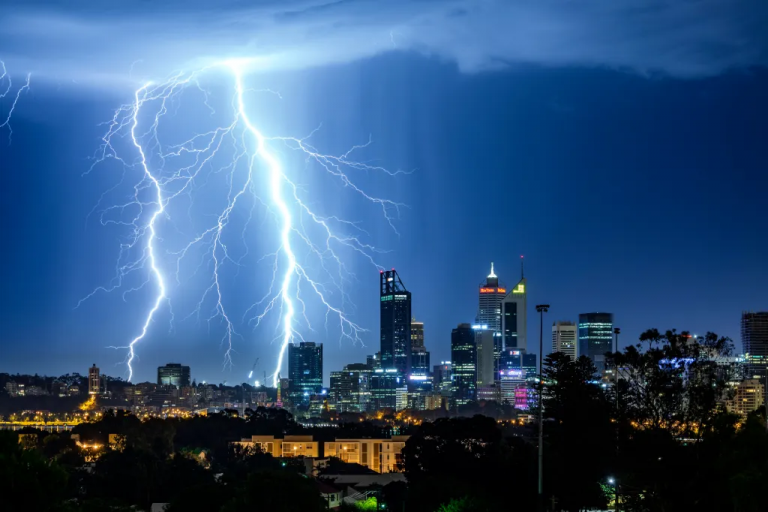
Severe Thunderstorm Watch in the US: What It Means and How You Can Stay Safe
severe thunderstorm watch USA: If you live in the United States, you’ve probably seen the words “Severe Thunderstorm Watch” flash across your TV or phone at some point — especially during spring or summer. It’s easy to brush it off and think, “Oh, it’s just rain.” But that small alert can actually mean the weather is setting up for something much stronger.
So what exactly does a severe thunderstorm watch mean? And what should you do when one is issued? Let’s break it down in simple terms.
What Does a Severe Thunderstorm Watch Mean?
When the National Weather Service (NWS) issues a Severe Thunderstorm Watch, it means that conditions are right for strong thunderstorms to develop. It doesn’t mean there’s a storm happening right now — it’s more like a heads-up that the atmosphere could produce dangerous weather soon.
A storm is classed as “severe” when it produces at least one of the following:
- Winds stronger than 58 mph (93 km/h)
- Hail larger than 1 inch in diameter
- Heavy rainfall that may lead to flash flooding
- Frequent lightning and thunder
Think of a “watch” as a weather warning light — it’s time to get ready, just in case.
Watch vs. Warning: What’s the Difference?
A lot of people mix up the terms “watch” and “warning.” Here’s an easy way to remember the difference:
- Watch = Be Prepared
It means a storm could happen soon. Stay alert. - Warning = Take Action Now
It means a storm is happening or is about to hit. Seek shelter immediately.
So, if you see a Severe Thunderstorm Watch, you don’t need to panic, but you should start paying attention to the weather updates.
Why Do Severe Thunderstorms Happen?
Thunderstorms form when warm, moist air rises and mixes with cooler air higher up in the atmosphere. This creates instability — and that’s what fuels strong storms.
Some common reasons severe thunderstorms develop include:
- Cold Fronts: When cold and warm air masses collide.
- Moisture: High humidity gives storms their power.
- Lift: Things like hills or sea breezes push air upward.
- Wind Shear: Changes in wind direction or speed help create rotating storm clouds.
These ingredients are often present in parts of the US where spring and summer weather changes quickly — especially in the Midwest and the South.
Which Areas in the US See the Most Severe Thunderstorms?
While storms can happen anywhere, certain regions are more at risk:
- Tornado Alley (Midwest): Texas, Oklahoma, and Kansas are well-known for severe weather and strong winds.
- Southeast States: Florida, Georgia, and Alabama see regular lightning storms during summer.
- Great Plains: Nebraska and South Dakota experience powerful hailstorms and strong winds.
- Eastern States: Pennsylvania, the Carolinas, and nearby states often face severe storms during humid summer months.
These areas tend to experience conditions that make it easy for thunderstorms to form — warm air, moisture, and rapid weather shifts.
What To Do When a Severe Thunderstorm Watch Is Issued
If a Severe Thunderstorm Watch appears in your area, here are practical things you should do:
1. Keep an Eye on the Weather
Use reliable sources like:
- Local news channels
- NOAA Weather Radio
- Trusted weather apps such as AccuWeather or The Weather Channel
2. Prepare a Small Emergency Kit
Include essentials like:
- A flashlight and spare batteries
- Bottled water and snacks
- A first-aid kit
- Power bank or portable charger
- Important documents in a waterproof bag
3. Bring Outdoor Items Inside
Loose items like garden furniture, bins, or bikes can easily become dangerous projectiles in strong winds.
4. Stay Indoors and Away from Windows
If you hear thunder, it means lightning is nearby. Stay inside and avoid standing near windows or doors.
5. Unplug Electronics
Lightning can cause power surges that damage TVs, computers, or routers. Unplug them to stay safe.
6. Avoid Flooded Roads
Heavy rainfall can cause flash floods. Even shallow water can sweep away vehicles — so never drive through flooded areas.
After the Storm: What You Should Check
Once the thunder and rain have passed, take a few minutes to check your surroundings:
- Look for downed power lines or broken trees — stay clear and report them.
- Make sure your home and roof are safe.
- Help neighbours, especially elderly people or families with young children.
- Stay updated in case more storms are forecasted later that day.
It’s always better to double-check your safety after a storm than to assume everything’s fine.
How Technology Helps Save Lives During Storms
Today, technology plays a massive role in weather safety. The National Weather Service uses radar systems and satellites to detect severe storms early.
Smartphones and weather apps can send instant alerts about thunderstorm watches and warnings based on your location.
You can even sign up for local emergency notifications from your city or county to get alerts directly to your phone.
Is Climate Change Making Thunderstorms Worse?
Many scientists believe that climate change could make severe weather more frequent or intense. Warmer air holds more moisture, which can lead to heavier rainfall and stronger thunderstorms.
Although research is ongoing, one thing is clear — being informed and prepared is more important than ever.
Final Thoughts
A Severe Thunderstorm Watch isn’t something to ignore — it’s a warning to get ready. Knowing what to do before, during, and after a storm can protect you, your home, and your loved ones.
So next time you hear that familiar alert on TV or see it pop up on your phone, don’t panic — just stay calm, stay informed, and stay safe.
Frequently Asked Questions
1. How long does a severe thunderstorm watch last?
Usually between 4 to 8 hours, depending on how the weather system develops.
2. Can a thunderstorm watch turn into a warning?
Yes. If severe weather actually forms, the watch will change to a Severe Thunderstorm Warning.
3. What should I do if I’m outside when a storm starts?
Find a safe shelter — a sturdy building or a hard-top car. Avoid open fields and tall trees.
4. Is it dangerous to use electronics during a thunderstorm?
Yes, avoid using wired electronics like landline phones or desktop computers during lightning storms.
5. Can a severe thunderstorm produce a tornado?
Sometimes. Not all do, but strong storms can create conditions for tornadoes to form.
For more info visit https://viralhotshots.com


